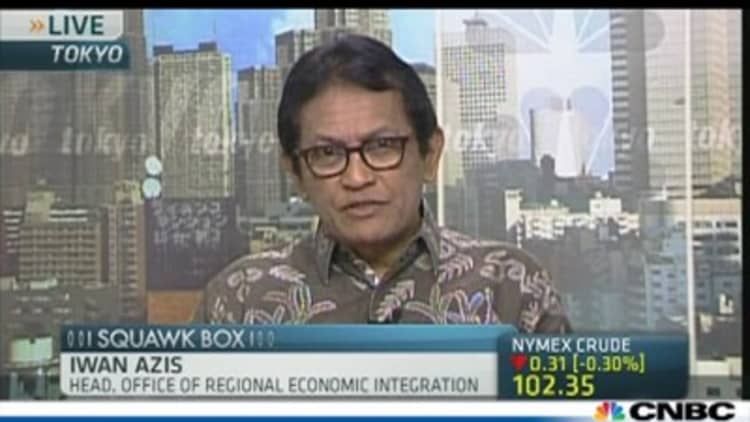The prospect of the Federal Reserve's much-anticipated taper is hurting Asian bond markets, a report from Asian Development Bank has found.
According to the report, local bond markets in Asia are still expanding, but at a more modest pace, as a direct result of investors being more cautious amid greater volatility and weaker growth in the region.
Emerging markets have taken a battering in recent months as fears of a reduction in the Fed's $85-billion-a-month bond buying program prompted sharp capital flows from the region.
Iwan Azis, head of the office of regional economic integration at the Asian Development Bank, told CNBC on Thursday that the current situation is not as dire as the 1997-1998 Asian financial crisis, when Asian bond yields spiked as investor cash exited the region, but warned that "tough times certainly lie ahead."
"Asia's bond markets - and its borrowers - are better placed to stand up to this latest round of global volatility than they were in 1997-1998 but tough times certainly lie ahead," said Azis.
(Read More: Why Fed Won't Trigger Messy Rerun of 1994 in Asia)
According to the report, in contrast with market conditions in 1997-1998, governments and companies now hold more of their debt in local rather than foreign currencies and they hold longer-dated debt than before, meaning they are less vulnerable to currency depreciation and sudden shifts in borrowing costs and investor appetite.
However, the market is expanding at a slower pace, the report found. At the end of the second quarter of this year, there was $6.8 trillion in local currency bonds outstanding in emerging East Asia, a 1.7 percent on quarter increase, but a slower growth rate than the 2.9 on quarter rise in the first quarter.

Meanwhile, on the issuance side, there were signs of borrowers holding back amid higher funding costs in the region, ADB said.
From April to June $827 billion in new bonds were sold, 4 percent more than the first quarter, but this was largely due to a near 27 percent increase in issuance by central governments and agencies. Meanwhile, corporate issuance slumped 20.1 percent on-quarter to $168 billion as new bond sales by companies in the People's Republic of China (PRC) near halved.
Emerging East Asian companies also found it tougher to borrow in the major foreign currencies. Issuance of foreign currency denominated debt slumped from $81 billion in the first five months of the year, to $7.5 billion in June and July.
To address the issue of weakening demand in the Asian bond market, ADB said the region needs to develop more stable sources of funding, including more foreign direct investment (FDI), which tends to be more stable than capital market investment and would attract a wider range of bond investors, such as pension funds.
The report also warned that, as a result of caution surrounding the Fed's eventual tapering, many Asian governments had missed the opportunity to raise cheap funds to finance $8 trillion's worth of critical infrastructure spending required in the region between 2010 and 2020.
"That will be a further constraint on growth and poverty reduction going forward," the report said.
(Read More: Asia's high-yield bonds still a premium play: HSBC)
ADB's Azis told CNBC Asia's Squawk Box on Thursday that one positive the region could take from the tapering fallout, however, was that it had proven a wake-up call for the countries that most need to press ahead with structural reform.
"I'm not that pessimistic about it, because in a way what's happened since May after the quantitative easing tapering discussion is eye opening for the policy makers as well as the markets in this region," he said.
— By CNBC's Katie Holliday: Follow her on Twitter @hollidaykatie


